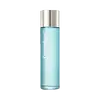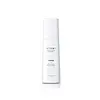What's inside
What's inside
 Key Ingredients
Key Ingredients

 Benefits
Benefits

 Concerns
Concerns

 Ingredients Side-by-side
Ingredients Side-by-side

Water
Skin ConditioningButylene Glycol
Humectant1,2-Hexanediol
Skin ConditioningRhus Semialata Gall Extract
Skin ConditioningGlycerin
HumectantPolysorbate 20
EmulsifyingEthylhexylglycerin
Skin ConditioningAllantoin
Skin ConditioningAloe Barbadensis Leaf Juice
Skin ConditioningChamomilla Recutita Flower Extract
MaskingHydrogenated Lecithin
EmulsifyingDipropylene Glycol
HumectantPelargonium Graveolens Flower Oil
MaskingDisodium EDTA
Cetearyl Olivate
Sorbitan Olivate
EmulsifyingPanthenol
Skin ConditioningTanacetum Vulgare Extract
Skin ConditioningSodium Hyaluronate
HumectantDextrin
AbsorbentSodium Citrate
BufferingCetearyl Alcohol
EmollientCeramide NP
Skin ConditioningGardenia Florida Fruit Extract
Skin ConditioningPhytosphingosine
Skin ConditioningCholesterol
EmollientBeta-Glucan
Skin ConditioningWater, Butylene Glycol, 1,2-Hexanediol, Rhus Semialata Gall Extract, Glycerin, Polysorbate 20, Ethylhexylglycerin, Allantoin, Aloe Barbadensis Leaf Juice, Chamomilla Recutita Flower Extract, Hydrogenated Lecithin, Dipropylene Glycol, Pelargonium Graveolens Flower Oil, Disodium EDTA, Cetearyl Olivate, Sorbitan Olivate, Panthenol, Tanacetum Vulgare Extract, Sodium Hyaluronate, Dextrin, Sodium Citrate, Cetearyl Alcohol, Ceramide NP, Gardenia Florida Fruit Extract, Phytosphingosine, Cholesterol, Beta-Glucan
Water
Skin ConditioningPyrus Malus Fruit Water
MaskingBetaine
HumectantGlycerin
Humectant1,2-Hexanediol
Skin ConditioningMethylpropanediol
SolventHouttuynia Cordata Extract
Skin ConditioningLavandula Angustifolia Extract
Skin ConditioningRosmarinus Officinalis Leaf Extract
AntimicrobialOcimum Basilicum Flower/Leaf Extract
TonicAnthemis Nobilis Flower Extract
MaskingFoeniculum Vulgare Fruit Extract
EmollientCentella Asiatica Extract
CleansingFicus Carica Fruit Extract
HumectantDiospyros Kaki Leaf Extract
Skin ProtectingPortulaca Oleracea Extract
Skin ConditioningAlgae Extract
EmollientEclipta Prostrata Leaf Extract
Skin ConditioningPhellinus Linteus Extract
Skin ConditioningCordyceps Sinensis Extract
AntioxidantSparassis Crispa Extract
Emulsion StabilisingUlmus Davidiana Root Extract
Skin ConditioningAmaranthus Caudatus Seed Extract
Skin ConditioningCamellia Sinensis Leaf Extract
AntimicrobialCamellia Sinensis Leaf Water
MaskingAloe Barbadensis Leaf Juice
Skin ConditioningHydrogenated Lecithin
EmulsifyingArgania Spinosa Kernel Oil
EmollientSodium Hyaluronate
HumectantPolyglyceryl-10 Laurate
Skin ConditioningCarbomer
Emulsion StabilisingDipropylene Glycol
HumectantDiphenyl Dimethicone
EmollientTriethylhexanoin
MaskingTromethamine
BufferingButylene Glycol
HumectantPanthenol
Skin ConditioningBiosaccharide Gum-1
HumectantTocopheryl Acetate
AntioxidantBeta-Glucan
Skin ConditioningDimethicone
EmollientSqualane
EmollientHydrogenated Polyisobutene
EmollientDipotassium Glycyrrhizate
HumectantBifida Ferment Lysate
Skin ConditioningPolyglyceryl-10 Myristate
Skin ConditioningIsononyl Isononanoate
EmollientPolyglyceryl-10 Stearate
Skin ConditioningDisodium EDTA
Caprylic/Capric Triglyceride
MaskingCetearyl Alcohol
EmollientStearic Acid
CleansingButyrospermum Parkii Butter
Skin ConditioningPolyglyceryl-2 Dipolyhydroxystearate
Skin ConditioningFructooligosaccharides
HumectantLecithin
EmollientCellulose Gum
Emulsion StabilisingCeramide NP
Skin ConditioningHydrolyzed Hyaluronic Acid
HumectantInulin Lauryl Carbamate
Emulsion StabilisingDisodium Stearoyl Glutamate
CleansingSodium Hyaluronate Crosspolymer
HumectantHyaluronic Acid
HumectantPalmitoyl Pentapeptide-4
Skin ConditioningHydrolyzed Sodium Hyaluronate
Skin ConditioningPolysorbate 20
EmulsifyingParfum
MaskingPentylene Glycol
Skin ConditioningEthylhexylglycerin
Skin ConditioningWater, Pyrus Malus Fruit Water, Betaine, Glycerin, 1,2-Hexanediol, Methylpropanediol, Houttuynia Cordata Extract, Lavandula Angustifolia Extract, Rosmarinus Officinalis Leaf Extract, Ocimum Basilicum Flower/Leaf Extract, Anthemis Nobilis Flower Extract, Foeniculum Vulgare Fruit Extract, Centella Asiatica Extract, Ficus Carica Fruit Extract, Diospyros Kaki Leaf Extract, Portulaca Oleracea Extract, Algae Extract, Eclipta Prostrata Leaf Extract, Phellinus Linteus Extract, Cordyceps Sinensis Extract, Sparassis Crispa Extract, Ulmus Davidiana Root Extract, Amaranthus Caudatus Seed Extract, Camellia Sinensis Leaf Extract, Camellia Sinensis Leaf Water, Aloe Barbadensis Leaf Juice, Hydrogenated Lecithin, Argania Spinosa Kernel Oil, Sodium Hyaluronate, Polyglyceryl-10 Laurate, Carbomer, Dipropylene Glycol, Diphenyl Dimethicone, Triethylhexanoin, Tromethamine, Butylene Glycol, Panthenol, Biosaccharide Gum-1, Tocopheryl Acetate, Beta-Glucan, Dimethicone, Squalane, Hydrogenated Polyisobutene, Dipotassium Glycyrrhizate, Bifida Ferment Lysate, Polyglyceryl-10 Myristate, Isononyl Isononanoate, Polyglyceryl-10 Stearate, Disodium EDTA, Caprylic/Capric Triglyceride, Cetearyl Alcohol, Stearic Acid, Butyrospermum Parkii Butter, Polyglyceryl-2 Dipolyhydroxystearate, Fructooligosaccharides, Lecithin, Cellulose Gum, Ceramide NP, Hydrolyzed Hyaluronic Acid, Inulin Lauryl Carbamate, Disodium Stearoyl Glutamate, Sodium Hyaluronate Crosspolymer, Hyaluronic Acid, Palmitoyl Pentapeptide-4, Hydrolyzed Sodium Hyaluronate, Polysorbate 20, Parfum, Pentylene Glycol, Ethylhexylglycerin
Ingredients Explained
These ingredients are found in both products.
Ingredients higher up in an ingredient list are typically present in a larger amount.
1,2-Hexanediol is a synthetic liquid and another multi-functional powerhouse.
It is a:
- Humectant, drawing moisture into the skin
- Emollient, helping to soften skin
- Solvent, dispersing and stabilizing formulas
- Preservative booster, enhancing the antimicrobial activity of other preservatives
Aloe Barbadensis Leaf Juice comes from leaves of the aloe plant. Aloe Barbadensis Leaf Juice is best known for helping to soothe sunburns. It is also anti-inflammatory, moisturizing, antiseptic, and can help heal wounds.
Aloe is packed with good stuff including Vitamins A, C, and E. These vitamins are antioxidants, which help fight free-radicals and the damage they may cause. Free-radicals are molecules that may damage your skin cells, such as pollution.
Aloe Barbadensis Leaf Juice also contains sugars. These sugars come in the form of monosaccharides and polysaccharides, folic acid, and choline. These sugars are able to help bind moisture to skin.
It also contains minerals such as calcium, 12 anthraquinones, fatty acids, amino acids, and Vitamin B12.
Learn more about Aloe Barbadensis Leaf JuiceBeta-Glucan is a polysaccharide. It can be derived from the cell walls of seaweed, oats, yeast, and fungi. It hydrates the skin and helps boost your skin's natural barrier.
As an antioxidant, beta-glucan helps fight free-radicals. Free-radicals are molecules that may damage your skin cells, such as pollution.
Studies show this ingredient may be an effective wrinkle reducer as it can deeply penetrate into skin. It has also been show to help with wound healing.
Learn more about Beta-GlucanButylene Glycol (or BG) is used within cosmetic products for a few different reasons:
Overall, Butylene Glycol is a safe and well-rounded ingredient that works well with other ingredients.
Though this ingredient works well with most skin types, some people with sensitive skin may experience a reaction such as allergic rashes, closed comedones, or itchiness.
Learn more about Butylene GlycolCeramide NP is a type of ceramide and formally known as ceramide 3.
Ceramides are intercellular lipids naturally found in our skin that bonds dead skin cells together to create a barrier. They are known for their ability to hold water and thus are a great ingredient for dry skin.
Ceramides are an important building block for our skin barrier. A stronger barrier helps the skin look more firm and hydrated. By bolstering the skin ceramides act as a barrier against irritating ingredients. This can help with inflammation as well.
If you would like to eat ceramides, sweet potatoes contain a small amount.
Read more about other common types of ceramides here:
Ceramide AP
Ceramide EOP
Cetearyl alcohol is a mixture of two fatty alcohols: cetyl alcohol and stearyl alcohol. It is mainly used as an emulsifier. Emulsifiers help prevent the separation of oils and products. Due to its composition, it can also be used to thicken a product or help create foam.
Cetearyl alcohol is an emollient. Emollients help soothe and hydrate the skin by trapping moisture.
Studies show Cetearyl alcohol is non-toxic and non-irritating. The FDA allows products labeled "alcohol-free" to have fatty alcohols.
This ingredient is usually derived from plant oils such as palm, vegetable, or coconut oils. There is debate on whether this ingredient will cause acne.
Due to the fatty acid base, this ingredient may not be Malassezia folliculitis safe.
Learn more about Cetearyl AlcoholDipropylene Glycol is a synthetically created humectant, stabilizer, and solvent.
This ingredient helps:
Dipropylene glycol is technically an alcohol, but it belongs to the glycol family (often considered part of the ‘good’ alcohols). This means it is hydrating and gentle on skin unlike drying solvent alcohols like denatured alcohol.
As a masking agent, Dipropylene Glycol can be used to cover the smell of other ingredients. However, it does not have a scent.
Studies show Dipropylene Glycol is considered safe to use in skincare.
Learn more about Dipropylene GlycolDisodium EDTA plays a role in making products more stable by aiding other preservatives.
It is a chelating agent, meaning it neutralizes metal ions that may be found in a product.
Disodium EDTA is a salt of edetic acid and is found to be safe in cosmetic ingredients.
Learn more about Disodium EDTAEthylhexylglycerin (we can't pronounce this either) is commonly used as a preservative and skin softener. It is derived from glyceryl.
You might see Ethylhexylglycerin often paired with other preservatives such as phenoxyethanol. Ethylhexylglycerin has been found to increase the effectiveness of these other preservatives.
Glycerin is already naturally found in your skin. It helps moisturize and protect your skin.
A study from 2016 found glycerin to be more effective as a humectant than AHAs and hyaluronic acid.
As a humectant, it helps the skin stay hydrated by pulling moisture to your skin. The low molecular weight of glycerin allows it to pull moisture into the deeper layers of your skin.
Hydrated skin improves your skin barrier; Your skin barrier helps protect against irritants and bacteria.
Glycerin has also been found to have antimicrobial and antiviral properties. Due to these properties, glycerin is often used in wound and burn treatments.
In cosmetics, glycerin is usually derived from plants such as soybean or palm. However, it can also be sourced from animals, such as tallow or animal fat.
This ingredient is organic, colorless, odorless, and non-toxic.
Glycerin is the name for this ingredient in American English. British English uses Glycerol/Glycerine.
Learn more about GlycerinHydrogenated Lecithin is created from the hydrogenation of lecithin (a group of phospholipids). Hydrogenation is a chemical reaction between hydrogen and another element.
This ingredient is an emollient and emulsifier. As an emollient, it helps soften skin by trapping moisture within. As an emulsifier, it prevents oil and water ingredients from separating.
Panthenol is a common ingredient that helps hydrate and soothe the skin. It is found naturally in our skin and hair.
There are two forms of panthenol: D and L.
D-panthenol is also known as dexpanthenol. Most cosmetics use dexpanthenol or a mixture of D and L-panthenol.
Panthenol is famous due to its ability to go deeper into the skin's layers. Using this ingredient has numerous pros (and no cons):
Like hyaluronic acid, panthenol is a humectant. Humectants are able to bind and hold large amounts of water to keep skin hydrated.
This ingredient works well for wound healing. It works by increasing tissue in the wound and helps close open wounds.
Once oxidized, panthenol converts to pantothenic acid. Panthothenic acid is found in all living cells.
This ingredient is also referred to as pro-vitamin B5.
Learn more about PanthenolPolysorbate 20 is made by combining ethoxylation of sorbitan, ethylene oxide, and lauric acid. It is a mild cleansing agent, surfactant, and emulsifier.
As a surfactant, it helps collect dirt and oils for washing. Emulsifiers prevent oils and water from separating.
Polysorbate 20 also adds scent to a product. Since it is made using sorbitol, it has a sweet scent. Sorbitol can also be found in fruits such as apples and peaches.
The lauric acid used to create Polysorbate 20 is often derived from coconuts.
Polysorbate 20 may not be fungal acne safe.
Learn more about Polysorbate 20Sodium Hyaluronate is hyaluronic acid's salt form. It is commonly derived from the sodium salt of hyaluronic acid.
Like hyaluronic acid, it is great at holding water and acts as a humectant. This makes it a great skin hydrating ingredient.
Sodium Hyaluronate is naturally occurring in our bodies and is mostly found in eye fluid and joints.
These are some other common types of Hyaluronic Acid:
Learn more about Sodium HyaluronateWater. It's the most common cosmetic ingredient of all. You'll usually see it at the top of ingredient lists, meaning that it makes up the largest part of the product.
So why is it so popular? Water most often acts as a solvent - this means that it helps dissolve other ingredients into the formulation.
You'll also recognize water as that liquid we all need to stay alive. If you see this, drink a glass of water. Stay hydrated!
Learn more about Water